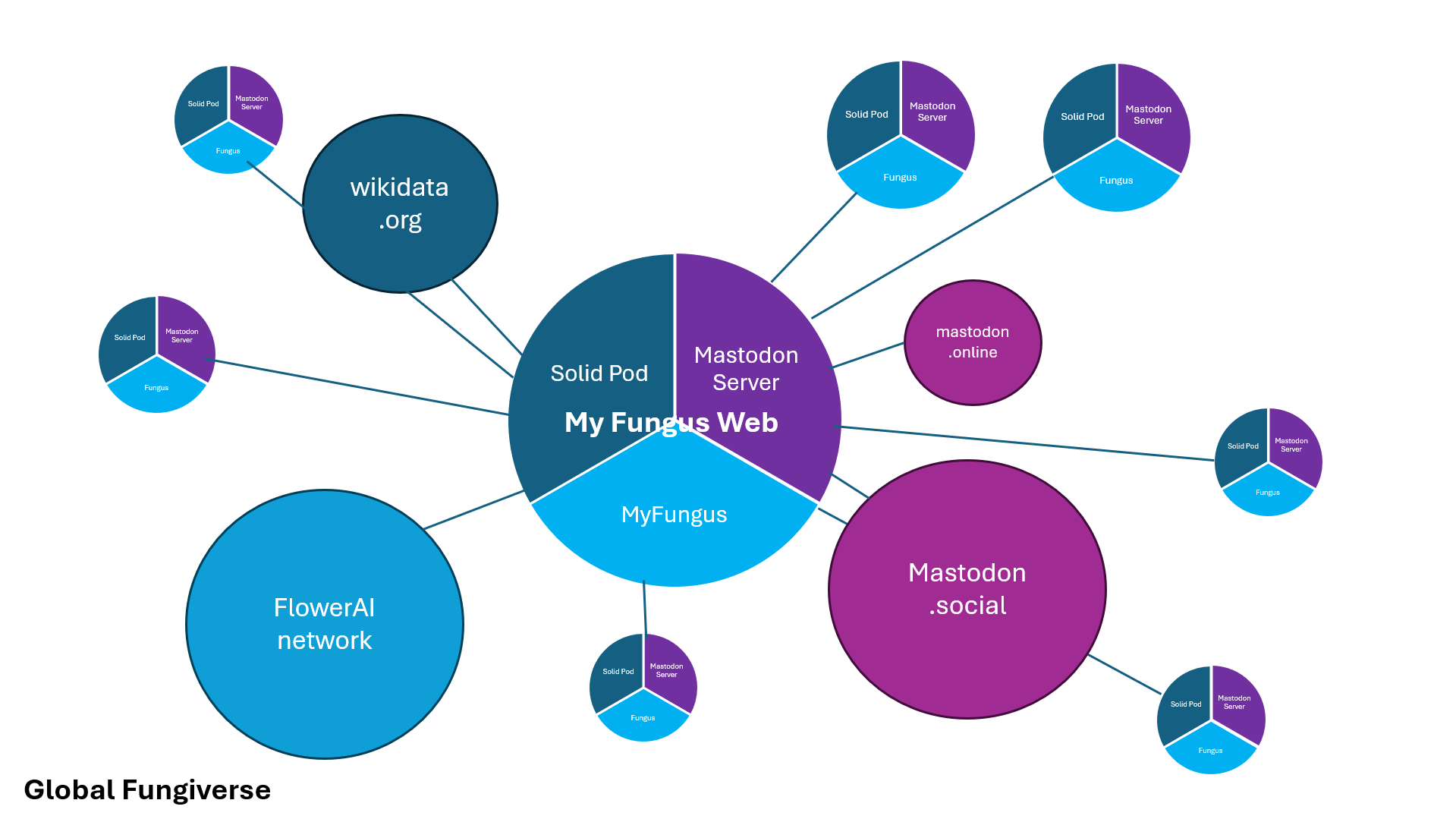
A fungus sits at the intersection of the social web (Mastodon, Pixelfed, Lemmy, etc.), the semantic web (knowledgraphs like Wikidata.org) and decentralized federated learning.
This means it represents the “computation web”-aspect in the above picture. Together with other similar agents, it result in a decentralized, federated web of AI agents that work on open, shared data and are open to communities. Everybody should be able to set up their own fungus service and help to grow an AI model of their choice. I call this the “fungiverse” or “mycelial web”.

A fungus web-service …
- answers user requests over the social web
- users are also able to insert knowledge via posting to a hashtag the fungus listens on
- writes and reads data from the semantic web to collaborate with other fungi agents (this would ideally done with decentralized technology like solid pods, or other knowledge graphs, e.g. like wikidata.org or an own fuseki server)
- develops a shared AI model (which is also written to the semantic web) based on decentralized federated learning (which would be ideally be based on something like FlowerAi, but isn’t at the moment).
The three parts can be thought of as a social network, a chat bot network and a knowledge graph (like a wiki for data), with all of the three aspects interlinked - the fungus drawing its data from the knowledge graph and being available in the social web as a bot, the social network to give access to the knowledge base and AI bots through bots, and the knowledge base, which can be viewed as a wiki with the bots that currently work on it and the comments from the social network. From a users perspective, the fungus appears as a chat bot interface (with the ability to view all bots its connected to and to which they are connected to etc.), the knowledge base would appear as a wiki like wikidata.org and the social network as a network like Mastodon.
The idea is that every user can install all of these three aspects on their own local PC to participate in the overall network (meaning having access to the social network, accessing global knowledge graphs and participating in decentralized learning to train their own bot).
Behaviour
In its behaviour its similar to that of a fungus (hence the name):

The shared model data can be thought of as the spores, which are also used by other fungi to adjust their models. The resulting AI chats available to the users are the “fruits” of the fungi.
Roughly, a fungi’s behaviour is defined by a protocol, for example SPORE.
The following fungus is able to make song recommendations to the user: https://github.com/bluebbberry/MusicRecommendationFungus
Here is a more technical description of a fungus and its incentives for human-fungus-interaction.



Yup title reeled me in, but even as an engineer… I tuned out after 2 sentences
Not even Star Trek Discovery goes at that pace. They give you some episodes with character development, Klingons etc before diving in to the tardigrades, mycelial network … But kind of reminds me of that.
Also: Has this been programmed by ChatGPT?